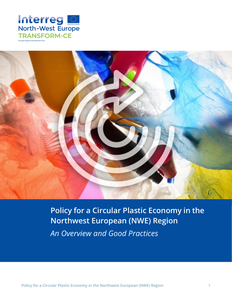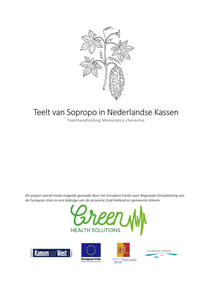High-pressure anaerobic digestion is an appealing concept since it can upgrade biogas directly within the reactor. However, the decline of pH caused by the dissolution of CO2 is the main barrier that prevents a good operating high-pressure anaerobic digestion process. Therefore, in this study, a high-pressure anaerobic digestion was studied to treat high alkalinity synthetic wastewater, which could not be treated in a normal-pressure anaerobic digester. In the high-pressure reactor, the pH value was 7.5 ~ 7.8, and the CH4 content reached 88% at 11 bar. Unlike its normal-pressure counterpart (2285 mg/L acetic acid), the high-pressure reactor ran steadily (without volatile fatty acids inhibition). Furthermore, the microbial community changed in the high-pressure reactor. Specifically, key microbial guilds (Syntrophus (11.2%), Methanosaeta concilii (50.9%), and Methanobrevibacter (26.8%)) were dominant in the high-pressure reactor at 11 bar, indicating their fundamental roles under high-pressure treating high alkalinity synthetic wastewater.
DOCUMENT
Thermal disinfection is probably the oldest water treatment method ever used. Similarly to other disinfection processes, it targets the inactivation of pathogenic (micro)organisms present in water, wastewater and other media. In this work, a pilot-scale continuous-flow thermal disinfection system was investigated using highly contaminated hospital wastewater as influent without any pre-treatment step for turbidity removal. The results proved that the tested system can be used with influent turbidity as high as 100 NTU and still provide up to log 8 microbial inactivation. Further results have shown energy consumption comparable to other commercially available thermal disinfection systems and relatively low influence on the investigated physical–chemical parameters.
DOCUMENT

Plasmid-mediated dissemination of antibiotic resistance among fecal Enterobacteriaceae in natural ecosystems may contribute to the persistence of antibiotic resistance genes in anthropogenically impacted environments. Plasmid transfer frequencies measured under laboratory conditions might lead to overestimation of plasmid transfer potential in natural ecosystems. This study assessed differences in the conjugative transfer of an IncP-1 (pKJK5) plasmid to three natural Escherichia coli strains carrying extended-spectrum beta-lactamases, by filter mating. Matings were performed under optimal laboratory conditions (rich LB medium and 37°C) and environmentally relevant temperatures (25, 15 and 9°C) or nutrient regimes mimicking environmental conditions and limitations (synthetic wastewater and soil extract). Under optimal nutrient conditions and temperature, two recipients yielded high transfer frequencies (5 × 10–1) while the conjugation frequency of the third strain was 1000-fold lower. Decreasing mating temperatures to psychrophilic ranges led to lower transfer frequencies, albeit all three strains conjugated under all the tested temperatures. Low nutritive media caused significant decreases in transconjugants (−3 logs for synthetic wastewater; −6 logs for soil extract), where only one of the strains was able to produce detectable transconjugants. Collectively, this study highlights that despite less-than-optimal conditions, fecal organisms may transfer plasmids in the environment, but the transfer of pKJK5 between microorganisms is limited mainly by low nutrient conditions.
DOCUMENT

Global society is confronted with various challenges: climate change should be mitigated, and society should adapt to the impacts of climate change, resources will become scarcer and hence resources should be used more efficiently and recovered after use, the growing world population and its growing wealth create unprecedented emissions of pollutants, threatening public health, wildlife and biodiversity. This paper provides an overview of the challenges and risks for sewage systems, next to some opportunities and chances that these developments pose. Some of the challenges are emerging from climate change and resource scarcity, others come from the challenges emerging from stricter regulation of emissions. It also presents risks and threats from within the system, next to external influences which may affect the surroundings of the sewage systems. It finally reflects on barriers to respond to these challenges. http://dx.doi.org/10.13044/j.sdewes.d6.0231 LinkedIn: https://www.linkedin.com/in/sabineeijlander/ https://www.linkedin.com/in/karel-mulder-163aa96/
MULTIFILE

This chapter will introduce the circular economy (CE) and Cradle to Cradle (C2C) models of sustainable production. It will reflect on the key blockages to a meaningful sustainable production and how these could be overcome, particularly in the context of business education. The case study of the course for bachelor’s students within International Business Management Studies (IBMS), and at University College in The Netherlands will be discussed. These case studies will illustrate the opportunities as well as potential pitfalls of the closed loop production models. The results of case studies’ analysis show that there was a mismatch between expectations of the sponsor companies and those of students on the one hand and a mismatch between theory and practice on the other hand. Helpful directions for future research and teaching practice are outlined. https://www.springer.com/gp/book/9783319713113#aboutBook https://www.linkedin.com/in/helenkopnina/
MULTIFILE

The ‘Grand Challenges’ of our times, like climate change, resource depletion, global inequity, and the destruction of wildlife and biodiversity can only be addressed by innovating cities. Despite the options of tele-working, tele-trading and tele-amusing, that allow people to participate in ever more activities, wherever they are, people are resettling in cities at an unprecedented speed. The forecasted ‘rurification’ of society did not occur. Technological development has drained rural society from its main source of income, agriculture, as only a marginal fraction of the labour force is employed in agriculture in the rich parts of the world. Moreover, technological innovation created new jobs in the IT and service sectors in cities. Cities are potentially far more resource efficient than rural areas. In a city transport distances are shorter, infrastructures can be applied to provide for essential services in a more efficient way and symbiosis might be developed between various infrastructures. However, in practice, urban infrastructures are not more efficient than rural infrastructures. This paper explores the reasons why. It digs into the reasons why the symbiotic options that are available in cities are not (sufficiently) utilised. The main reason for this is not of an economic nature: Infrastructure organisations are run by experts who are part of a strong paradigmatic community. Dependence on other organisations is regarded as limiting the infrastructure organisation’s freedom of action to achieve its own goals. Expert cultures are transferred in education, professional associations, and institutional arrangements. By 3 concrete examples of urban systems, the paper will analyse how various paradigms of experts co-evolved with evolving systems. The paper reflects on recent studies that identified professional education as the initiation into such expert paradigms. It will thereby relate lack of urban innovation to the monodisciplinary education of experts and the strong institutionalised character of expertise. https://doi.org/10.1007/978-3-319-63007-6_43 LinkedIn: https://www.linkedin.com/in/karelmulder/
MULTIFILE

Scheepvaart, landbouw, zand- en kleiwinning hebben, naast hoogwaterveiligheid, eeuwenlang de inrichting en het beheer van het rivierengebied bepaald. In de jaren tachtig van de vorige eeuw (her)ontdekte men het natuurpotentieel van het rivierengebied. Ook voor wonen en recreatie richtte men de aandacht op het rivierengebied. Het werd gecompliceerd toen de eerste effecten van de klimaatverandering zichtbaar werden met de extreme hoogwaters van 1993 en 1995. Het verenigen van alle ruimteclaims bleek geen eenvoudige opgave. Er werd naarstig gezocht naar modellen waarbij ook regionale en lokale partijen hunsteentje zouden bijdragen aan de gewenste functiecombinaties. Sindsdien is de behoefte aan co-creatie in het rivierengebied alleen nog maar groter geworden. Hoe is het eigenlijk met die experimenten afgelopen? En welke stappen worden nu ondernomen om co-creatie in het rivierengebied verder te optimaliseren?
DOCUMENT

This document combines four reports on existing regional business support programmes for inclusion or understanding of circular economy (CE) objectives, deliverable DT3.1.2 from the transform-CE project. Besides a general overview on national and regional level, the focus is on a selection of national and regional programmes aimed at the plastics industry. After explaining the format to structure the programmes, the results for the four regions are presented: Greater Manchester (UK), Rhineland Palatinate and North-Rhine Westphalia (DE), Wallonia (BE), Central Netherlands (NL).
MULTIFILE

Positioning paper bij de inauguratie van Vincent Voet als lector Circular Plastics.
DOCUMENT
![People. Planet. Polymer: een Wereld te Winnen [Inaugurele rede]](https://publinova-harvester-content-prod.s3.amazonaws.com/thumbnails/files/previews/pdf/20250506132442742072.Positioning20Paper20Vincent20Voet202024-thumbnail-400x300.png)
Sopropo wordt ook wel bitter gourd, balsempeer, karela of bittermeloen genoemd en is lid van de komkommerfamilie (Cucurbitaceae). Het is een eenhuizige, eenjarige, snelgroeiende en kruidachtige klimplant. De gerimpelde vrucht van de bitter gourd wordt in Azië, Oost-Afrika, Zuid-Amerika en India geconsumeerd als groente en medicijn. Alhoewel de sopropo nog niet bekend is in de Nederlandse keuken, kan dit zeker een aanwinst zijn in de huidige trend om voeding te gebruiken als medicijn. Het doel van deze teelthandleiding van sopropo is het toegankelijk maken van deze teelt voor Nederlandse telers en op deze wijze te kunnen voldoen aan de marktvraag. Daarnaast heeft deze teelthandleiding als doel inzicht te geven in de gestandaardiseerde productie van de medicinale inhoudsstoffen in de vrucht.
DOCUMENT
